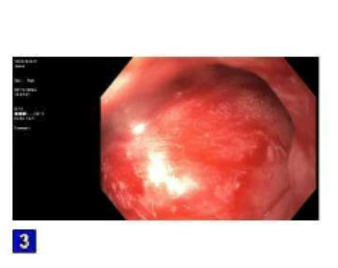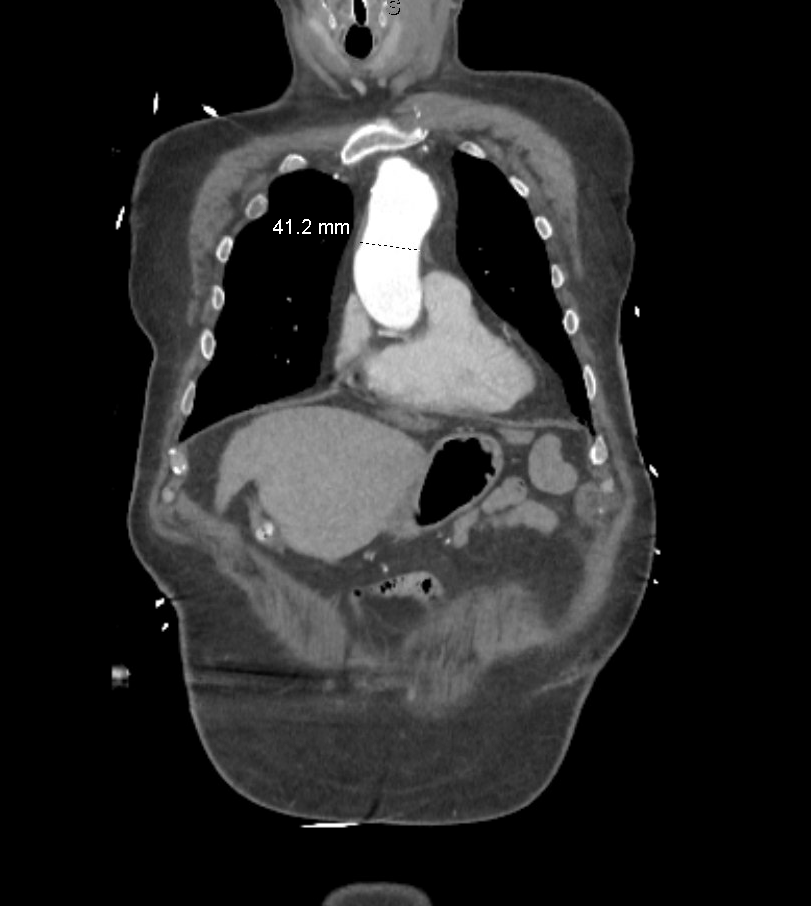Monday Poster Session
Category: Esophagus
P2841 - A Choking Warning: Dysphagia Aortica Revealing a Life-Threatening Aneurysm
Monday, October 27, 2025
10:30 AM - 4:00 PM PDT
Location: Exhibit Hall

Raya Alashram, MD
Albany Medical Center
Albany, NY
Presenting Author(s)
Raya Alashram, MD, Ahmad Abulawi, MD, Seth Richter, MD, FACG, Stephen Hasak, MD, MPH
Albany Medical Center, Albany, NY
Introduction: Dysphagia refers to difficulty swallowing, typically resulting from structural or functional abnormalities of the oropharynx or esophagus. Dysphagia aortica is a rare but clinically significant condition caused by external compression of the esophagus by an
abnormally dilated or tortuous aorta. It is most commonly associated with thoracic aortic aneurysms, severe aortic tortuosity, or aortic dissections. In rare cases, dysphagia aortica may be the initial—and only—manifestation of a life-threatening aortic pathology.
Misdiagnosis or delays in diagnosis and treatment can result in fatal outcomes. We present a case of dysphagia aortica caused by a contained rupture of a descending thoracic aortic aneurysm, which initially presented as acute dysphagia in the emergency
department.
Case Description/
Methods: A 52-year-old male with a significant smoking history presented to the emergency department with acute dysphagia and food impaction following a meal of steak and potatoes. Initial conservative management with glucagon was unsuccessful, prompting
esophagogastroduodenoscopy (EGD) for food bolus removal. During EGD, a pulsatile, extrinsic compression of the esophagus was noted 30–35 cm from the incisors (Figure 1). Given these findings, the gastroenterology team recommended cross-sectional
imaging. Computed tomography (CT) of the chest with contrast revealed a contained rupture of a descending thoracic aortic aneurysm (Figure 2). Cardiothoracic and vascular surgery teams were consulted, and the patient underwent total aortic arch
replacement using the elephant trunk technique. Postoperatively, the hospital course was complicated by sepsis secondary to pneumonia, respiratory failure, and acute kidney injury. Following multidisciplinary discussions and per the family's wishes, care
was transitioned to comfort measures.
Discussion: Dysphagia aortica is a rare and underrecognized clinical entity, often reported only in isolated case studies. It is more frequently observed in older individuals with predisposing vascular risk factors. Because it may be the first sign of a life-threatening
aortic condition, prompt recognition is critical. Early imaging is essential for diagnosis, especially in patients presenting with food impaction and risk factors for vascular disease. We advocate for initial radiographic evaluation prior to endoscopic intervention
to reduce the risk of catastrophic outcomes in appropriate clinical contexts.

Figure: Figure 1
Extrinsic compression of the esophagus by a pulsatile mass in the middle third of esophagus at about 30 to 33 cm

Figure: Figure 2
Contained rupture of a descending thoracic aortic aneurysm
Disclosures:
Raya Alashram indicated no relevant financial relationships.
Ahmad Abulawi indicated no relevant financial relationships.
Seth Richter indicated no relevant financial relationships.
Stephen Hasak: Castle Biosciences – Speakers Bureau. Conmed – Consultant.
Raya Alashram, MD, Ahmad Abulawi, MD, Seth Richter, MD, FACG, Stephen Hasak, MD, MPH. P2841 - A Choking Warning: Dysphagia Aortica Revealing a Life-Threatening Aneurysm, ACG 2025 Annual Scientific Meeting Abstracts. Phoenix, AZ: American College of Gastroenterology.
Albany Medical Center, Albany, NY
Introduction: Dysphagia refers to difficulty swallowing, typically resulting from structural or functional abnormalities of the oropharynx or esophagus. Dysphagia aortica is a rare but clinically significant condition caused by external compression of the esophagus by an
abnormally dilated or tortuous aorta. It is most commonly associated with thoracic aortic aneurysms, severe aortic tortuosity, or aortic dissections. In rare cases, dysphagia aortica may be the initial—and only—manifestation of a life-threatening aortic pathology.
Misdiagnosis or delays in diagnosis and treatment can result in fatal outcomes. We present a case of dysphagia aortica caused by a contained rupture of a descending thoracic aortic aneurysm, which initially presented as acute dysphagia in the emergency
department.
Case Description/
Methods: A 52-year-old male with a significant smoking history presented to the emergency department with acute dysphagia and food impaction following a meal of steak and potatoes. Initial conservative management with glucagon was unsuccessful, prompting
esophagogastroduodenoscopy (EGD) for food bolus removal. During EGD, a pulsatile, extrinsic compression of the esophagus was noted 30–35 cm from the incisors (Figure 1). Given these findings, the gastroenterology team recommended cross-sectional
imaging. Computed tomography (CT) of the chest with contrast revealed a contained rupture of a descending thoracic aortic aneurysm (Figure 2). Cardiothoracic and vascular surgery teams were consulted, and the patient underwent total aortic arch
replacement using the elephant trunk technique. Postoperatively, the hospital course was complicated by sepsis secondary to pneumonia, respiratory failure, and acute kidney injury. Following multidisciplinary discussions and per the family's wishes, care
was transitioned to comfort measures.
Discussion: Dysphagia aortica is a rare and underrecognized clinical entity, often reported only in isolated case studies. It is more frequently observed in older individuals with predisposing vascular risk factors. Because it may be the first sign of a life-threatening
aortic condition, prompt recognition is critical. Early imaging is essential for diagnosis, especially in patients presenting with food impaction and risk factors for vascular disease. We advocate for initial radiographic evaluation prior to endoscopic intervention
to reduce the risk of catastrophic outcomes in appropriate clinical contexts.

Figure: Figure 1
Extrinsic compression of the esophagus by a pulsatile mass in the middle third of esophagus at about 30 to 33 cm

Figure: Figure 2
Contained rupture of a descending thoracic aortic aneurysm
Disclosures:
Raya Alashram indicated no relevant financial relationships.
Ahmad Abulawi indicated no relevant financial relationships.
Seth Richter indicated no relevant financial relationships.
Stephen Hasak: Castle Biosciences – Speakers Bureau. Conmed – Consultant.
Raya Alashram, MD, Ahmad Abulawi, MD, Seth Richter, MD, FACG, Stephen Hasak, MD, MPH. P2841 - A Choking Warning: Dysphagia Aortica Revealing a Life-Threatening Aneurysm, ACG 2025 Annual Scientific Meeting Abstracts. Phoenix, AZ: American College of Gastroenterology.
